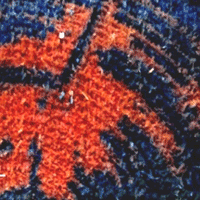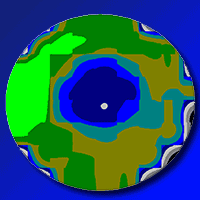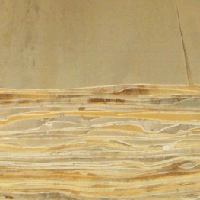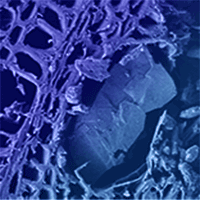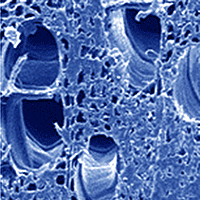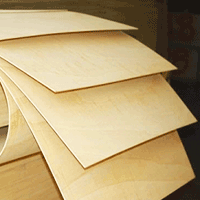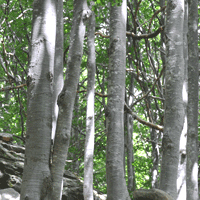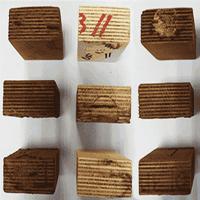
Reversible and irreversible effects of mild thermal treatment on the properties of wood used for making musical instruments: comparing mulberry to spruce
Elham Karami (1-2) , Iris Brémaud (1), Sandrine Bardet (1), Tancrède Almeras (1), Daniel Guibal (3), Patrick Langbour (3), Kambiz Pourtahmasi (4), Joseph Gril (5-6)
iForest - Biogeosciences and Forestry, Volume 15, Issue 4, Pages 256-264 (2022)
doi: https://doi.org/10.3832/ifor4074-015
Published: Jul 20, 2022 - Copyright © 2022 SISEF
Research Articles
Abstract
Thermal treatments can be considered as an accelerated ageing, bringing partly similar changes in properties as naturally aged wood. Thermal treatment was applied on white mulberry (Morus alba L.), a dominant species for making musical instruments from middle-East to Far-East, to investigate the effects on the vibro-mechanical and physical properties of this wood, and the results compared to previously published data on spruce (Picea abies Karst.) as a reference for the soundboard of Western string instruments. Thermal treatment (TT) at 150 °C and 0% of relative humidity was applied to five analogous groups of specimens with five different durations (2.5, 8, 24, 72, 261 hours). Humidity re-conditioning of specimens was done to explore the reversibility of TT effects. Physical and vibrational properties such as specific gravity (γ), equilibrium moisture content (EMC), CIELab colorimetric values, specific modulus of elasticity (E’/γ) and damping coefficient (tanδ) in longitudinal (L) and radial (R) directions, have been measured after stabilisation of samples in standard conditions (20 °C, 65% RH), before and after TT and then after re-conditioning. Untreated mulberry had a low EMC, very low L/R anisotropy and low E’L/γ, and relatively low tanδ. Weight loss (WL) and CIELab values evolved similarly during TT for mulberry and for previous results on spruce, however, their EMC and vibrational properties were affected differently. This could be explained in part by the low anisotropy of mulberry, and in part by its particular extractives. The parts of irreversible effects, linked to chemical modification or degradation, and of reversible effects, linked to physical configuration, were different between mulberry and spruce. The applied treatments did not bring permanent “improvements” in vibrational properties of mulberry, yet its colour appearance was enhanced.
Keywords
Anisotropy, CIELab, Morus alba, Musical Instruments, Reconditioning, Thermal Treatment, Vibrational Properties
Authors’ Info
Authors’ address
Iris Brémaud 0000-0001-7999-6661
Sandrine Bardet 0000-0003-2156-6014
Tancrède Almeras
Wood Team, LMGC, CNRS, Univ. Montpellier, Montpellier (France)
Department of Wood Processing and Biomaterials, University CULS, Prague (Czech Republic)
Patrick Langbour 0000-0001-6037-255X
BioWooEB, CIRAD, Montpellier (France)
Department of Wood and Paper Science and Technology, Faculty of Natural Resources, University of Tehran, Karaj (Iran)
Université Clermont Auvergne, CNRS, Institut Pascal, Clermont-Ferrand (France)
Corresponding author
Paper Info
Citation
Karami E, Brémaud I, Bardet S, Almeras T, Guibal D, Langbour P, Pourtahmasi K, Gril J (2022). Reversible and irreversible effects of mild thermal treatment on the properties of wood used for making musical instruments: comparing mulberry to spruce. iForest 15: 256-264. - doi: 10.3832/ifor4074-015
Academic Editor
Petar Antov
Paper history
Received: Feb 06, 2022
Accepted: May 16, 2022
First online: Jul 20, 2022
Publication Date: Aug 31, 2022
Publication Time: 2.17 months
Copyright Information
© SISEF - The Italian Society of Silviculture and Forest Ecology 2022
Open Access
This article is distributed under the terms of the Creative Commons Attribution-Non Commercial 4.0 International (https://creativecommons.org/licenses/by-nc/4.0/), which permits unrestricted use, distribution, and reproduction in any medium, provided you give appropriate credit to the original author(s) and the source, provide a link to the Creative Commons license, and indicate if changes were made.
Web Metrics
Breakdown by View Type
Article Usage
Total Article Views: 6997
(from publication date up to now)
Breakdown by View Type
HTML Page Views: 3117
Abstract Page Views: 2231
PDF Downloads: 1226
Citation/Reference Downloads: 2
XML Downloads: 421
Web Metrics
Days since publication: 1231
Overall contacts: 6997
Avg. contacts per week: 39.79
Citation Metrics
Article Citations
Article citations are based on data periodically collected from the Clarivate Web of Science web site
(last update: Mar 2025)
Total number of cites (since 2022): 1
Average cites per year: 0.25
Publication Metrics
by Dimensions ©
Articles citing this article
List of the papers citing this article based on CrossRef Cited-by.
References
Diversité desbois utilisés ou utilisables en facture d’instruments de musique [Diversity of woods used or usable in musical instruments making]. PhD thesis in Wood Mechanics, Université Montpellier II, France, pp. 294. [in French]
Gscholar
Colorimétrie des bois: diversité du matériau et complexité de son apparence [Colorimetry of woods: diversity of the material and complexity of its appearance]. Conservation-Restauration-CoRé 1: 61-84. [in French]
Online | Gscholar
Physical and mechanical properties of Boxwood (Buxus sempervirens L.) - From the empirical knowledge to measured properties. In: Proceedings of the 2nd International Symposium “WoodSciCraft - Technology and Beauty in Wood Utilization” (Fujii Y, Matsuo M eds). Kyoto (Japan) 20-24 Sept 2016. Kyoto University, Japan, pp. 69-73.
Gscholar
The role of tonewood selection and aging in instrument quality as viewed by violin makers. In: Proceedings of the 2nd Annual Conference COST FP1302 “WoodMusICK - Effects of Playing on Early and Modern Musical Instruments” (Rossi Rognoni G, Barry A-M eds.). London (UK) 9-10 Sept 2015. Royal College of Music, London, UK, pp. 35-37.
Gscholar
Revisiting the notion of “resonance wood” choice: a decompartmentalised approach, from violin-makers’ opinion and perception to characterization of material properties’ variability. In: “Wooden Musical Instruments: Different Forms of Knowledge” (Pérez MA, Marconi E eds). Book of End of “WoodMusICK” COST Action FP1302, Philharmonie de Paris, Paris, France, pp. 119-142.
Gscholar
Wood modification: chemical, thermal and other processes. John Wiley and Sons, Chichester, UK, pp. 264.
Gscholar
Effects of aging on the vibrational properties of wood. Journal of Cultural Heritage 13: S21-S25.
Gscholar
Specific dynamic young’s modulus and internal friction of wood in the longitudinal direction. Wood Research Technology Notes 22: 53-65. [in Japanese]
Gscholar
Moisture dependence of vibrational properties for heat-treated wood. Journal of the Japan Wood Research Society 46: 88-94.
Gscholar
Hygroscopicity of heat-treated wood. 2: Reversible and irreversible reductions in the hygroscopicity of wood due to heating. Journal of the Japan Wood Research Society 48: 288-295. [in Japanese]
Gscholar
Effects of ageing and heating on the mechanical properties of wood. In: “Wood Science for Conservation of Cultural Heritage” (Uzielli L ed). Firenze University Press, Firenze, Italy, pp. 16-23.
Gscholar
Study on some factors affecting acoustic coefficient and damping properties of wood using non destructive tests. PhD thesis, Wood Science department, Campus of Science and Researches, Islamic Azad University, Tehran, Iran, pp. 129.
Gscholar
The Music of the Mulberry: wood science, know-how and symbolism in instrument-making in Khorassan (Iran) and Central Asia. In: “Wooden Musical Instruments: Different Forms of Knowledge” (Pérez MA, Marconi E eds). Book of End of WoodMusICK COST Action FP1302, Philharmonie de Paris, Paris, France, pp. 399-415.
Gscholar
Untersuchungen zur vergleichenden Charakterisierung von thermisch modifizierter Fichte fur Resonanzdecken von Gitarren [Investigations on the characterisation of thermally modified spruce for sound boards of guitars]. Holz als Roh- und Werkstoff 64: 313-316. [in German]
CrossRef | Gscholar

